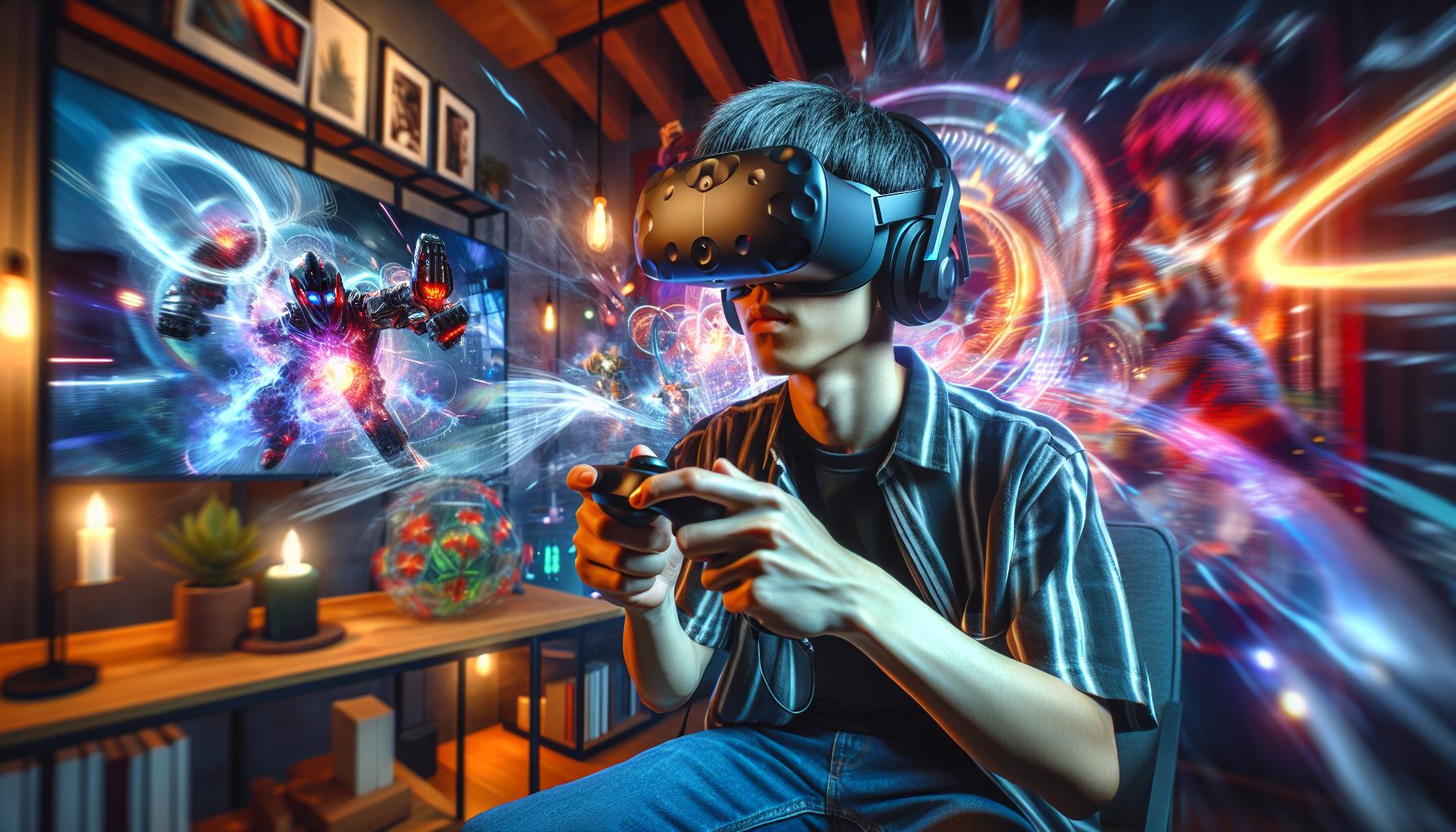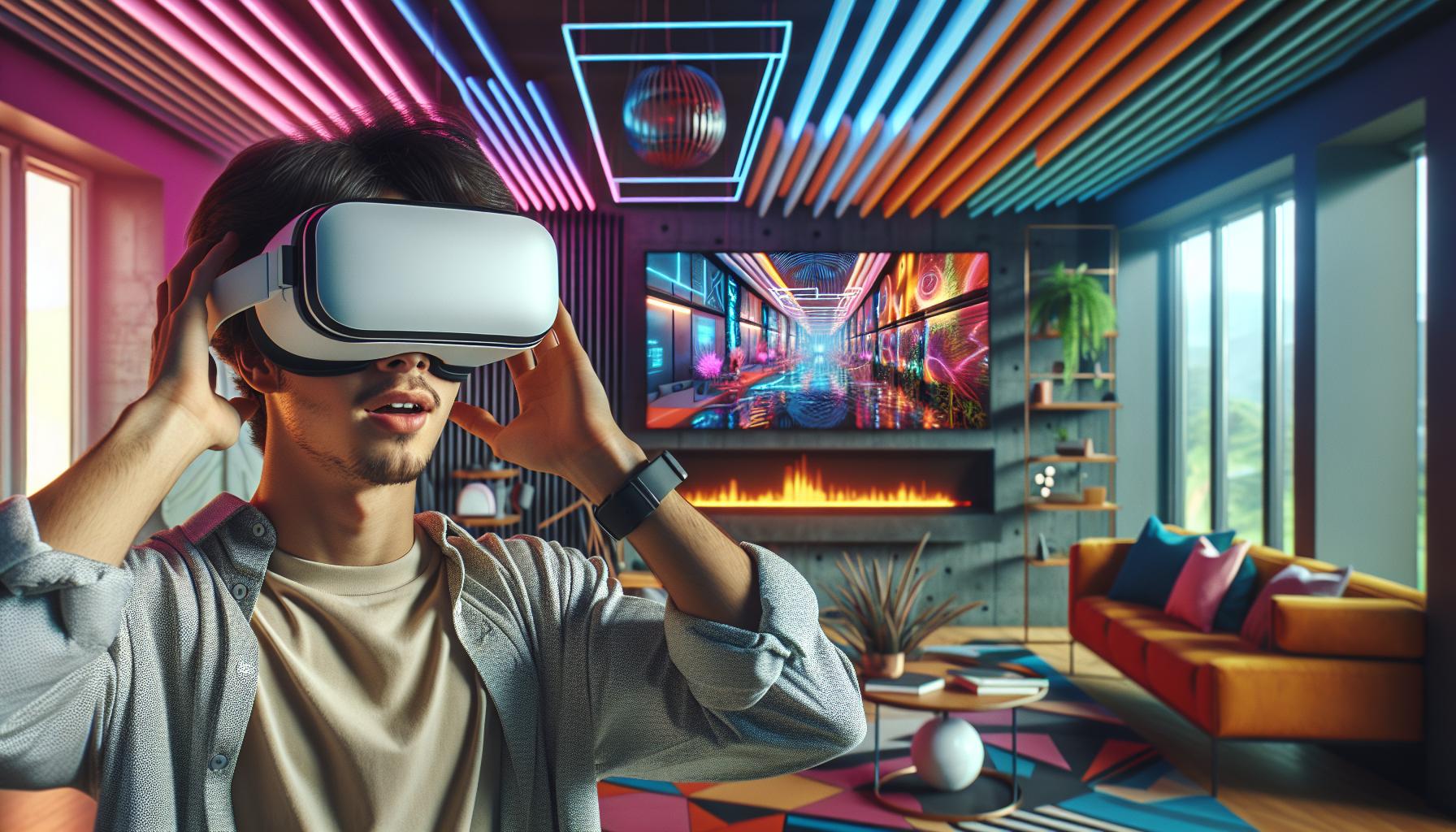Key Takeaways
- Transformative Experience: Virtual reality videos offer immersive content that enhances emotional connections, taking viewers beyond the limitations of traditional media.
- Improving Accessibility: Advancements in VR technology and reduced headset prices are expanding access, allowing more people to explore virtual environments.
- Diverse Applications: VR videos are being utilized across various sectors, including education for interactive learning, healthcare for training simulations, and tourism for virtual explorations.
- Engagement & Retention: The interactive nature of VR videos significantly boosts viewer engagement and information retention, making them effective tools for both entertainment and education.
- Challenges Ahead: Despite the benefits, technical limitations and content accessibility remain barriers that need to be addressed to maximize VR’s impact.
- Future Innovations: Trends such as increased AI integration, social VR experiences, and eco-friendly developments promise to shape and expand the virtual reality landscape moving forward.
Virtual reality videos are transforming the way people experience content. By immersing viewers in captivating digital environments, these videos create a sense of presence that traditional media simply can’t match. Whether it’s exploring distant planets or walking through historical landmarks, the possibilities are endless.
As technology advances, the accessibility and quality of virtual reality experiences continue to improve. With affordable headsets and a growing library of immersive content, more individuals are discovering the thrill of stepping into a new reality. This article delves into the world of virtual reality videos, exploring their impact, applications, and the future of this exciting medium.
Virtual Reality Videos
Virtual reality videos represent a cutting-edge shift in how users interact with digital content. These videos use a combination of 360-degree footage and immersive technology to create a sense of presence, transporting viewers into richly detailed environments. Viewers experience sights and sounds as if they are physically present in the scene, enhancing emotional connections.
Recent advancements in VR technology have facilitated easier access for consumers. High-definition displays, improved headsets, and enhanced computing power contribute to the growing popularity of virtual reality videos. Platforms like YouTube and specialized VR apps enable content creators to share immersive experiences with a global audience.
Various applications for virtual reality videos span entertainment, education, healthcare, and tourism. Educational institutions use VR for interactive learning sessions, allowing students to explore historical events or complex scientific concepts in a vivid manner. In healthcare, VR simulations train medical professionals in realistic scenarios, improving their skills without risking patient safety.
Market data indicates a steady increase in demand for virtual reality content. According to a recent report by Grand View Research, the global virtual reality market size reached $15.81 billion in 2020 and is expected to expand at a compound annual growth rate (CAGR) of 18.0% from 2021 to 2028. This growth reflects heightened interest in immersive experiences and content across various sectors.
Overall, virtual reality videos reshape how audiences consume media, offering them unique and engaging experiences.
Benefits of Virtual Reality Videos

Virtual reality videos offer numerous advantages that enhance viewing experiences and widen their applications. Two key benefits are enhanced immersion and increased engagement.
Enhanced Immersion
Enhanced immersion immerses viewers in lifelike environments. Virtual reality videos utilize 360-degree footage, allowing users to explore their surroundings intuitively. The sensory experience provided by quality audio and visual elements creates a sense of presence, making viewers feel as if they are part of the scene. Studies indicate that immersive experiences can promote emotional responses more effectively than traditional media. For example, VR can transport users to historical events or distant locations, facilitating deeper connections and memories.
Increased Engagement
Increased engagement stems from the interactive nature of virtual reality videos. Viewers can actively participate in their experiences rather than passively consuming content. This interactivity boosts attention and retention rates, making the content more memorable. Educational applications benefit significantly; students engaged in VR learning retain information more effectively compared to standard teaching methods. Additionally, brands use VR to create compelling marketing campaigns that captivate audiences, leading to higher conversion rates and customer loyalty.
Popular Applications of Virtual Reality Videos

Virtual reality videos find extensive use across various fields, enhancing experiences and interactions for users. The versatility of VR technology extends to gaming, education, and virtual tours, showcasing its multifaceted nature.
Gaming
Gaming stands as one of the most prominent applications for virtual reality videos, offering players immersive experiences. Users step into vivid worlds, interacting with characters and environments in real-time. Titles like “Beat Saber” and “Half-Life: Alyx” exemplify how VR transforms gameplay, allowing players to engage more deeply than traditional gaming methods. The social aspect of multiplayer VR games also fosters community building, enabling players to connect and collaborate in shared environments.
Education and Training
Education and training leverage virtual reality videos to create interactive learning experiences. Schools and institutions implement VR for subjects like history, science, and language, providing students with hands-on experiences that reinforce concepts. Medical training programs utilize VR simulations for surgical procedures, allowing students to practice in realistic settings without risks. This engagement improves knowledge retention, as learners actively participate rather than passively consume information.
Virtual Tours
Virtual tours deliver immersive explorations of places, making them accessible to users around the globe. Museums, historical sites, and natural wonders showcase their offerings through VR, allowing viewers to experience locations they may never visit physically. Educational institutions, like the Smithsonian, offer virtual tours that enhance learning about culture and history. This application not only promotes awareness but also broadens accessibility, enabling users to explore diverse environments from the comfort of their homes.
Challenges in Virtual Reality Videos

Challenges in virtual reality (VR) videos can hinder their widespread adoption and effectiveness. Key obstacles include technical limitations and content accessibility.
Technical Limitations
Technical limitations significantly affect the quality and user experience of VR videos. Hardware restrictions, such as processing power requirements, impact playback and overall performance. Many users face compatibility issues with various VR headsets and devices, hindering the universal viewing experience. Additionally, high-resolution VR content demands substantial bandwidth for streaming, making it less accessible in areas with limited internet connectivity. The development of VR software also requires specialized skills; therefore, not all content creators can produce high-quality experiences. These technical challenges can deter potential users from fully engaging with VR media.
Content Accessibility
Content accessibility remains a critical challenge for virtual reality videos. A lack of standardized platforms can restrict users’ ability to discover and access content. Individuals with disabilities may encounter barriers in VR environments, as not all experiences cater to diverse needs. Limited availability of VR educational content, especially in non-English languages, further reduces inclusivity. Additionally, cost remains a concern, as quality VR headsets and accessories can be prohibitively expensive for average consumers. Addressing these accessibility issues is vital to maximizing the reach and impact of virtual reality videos across different audiences.
Future Trends in Virtual Reality Videos
Future trends in virtual reality videos focus on several key advancements that shape the medium’s trajectory.
Increased Integration of Artificial Intelligence
Artificial intelligence (AI) enhances user experiences by personalizing content. AI algorithms analyze user preferences and behaviors, tailoring VR experiences to individual tastes. Content recommendation systems will become more sophisticated, leading to increased viewer satisfaction.
Enhanced Interactivity and Gamification
Interactivity in VR videos is set to grow, offering users more control over their experiences. Gamification elements, such as points and rewards, can motivate engagement. Users participate actively in narratives, creating a more dynamic viewing experience.
Development of Social VR Experiences
Social VR platforms promote community interactions, allowing users to connect in virtual spaces. These platforms facilitate shared experiences, from attending events to exploring environments together. As social connections deepen, content creation becomes more collaborative.
Advancements in VR Hardware
Ongoing developments in hardware improve accessibility and performance. Lighter headsets with higher resolution displays enhance users’ visual experiences. Wireless technology eliminates the constraints of physical connections, allowing free movement and interaction.
Expansion of Content Libraries
Content libraries for VR will expand significantly, catering to diverse interests. Various sectors, from education to entertainment, provide new and immersive experiences. Increased partnerships between industries can lead to innovative concepts and productions.
Focus on Health and Wellness Applications
Healthcare applications will continue to rise, utilizing VR for therapy and training. Therapeutic VR programs address mental health issues and aid rehabilitation. Training simulations for medical professionals provide realistic environments for practice.
Eco-Friendly Developments
Focus on sustainability in VR content creation reflects a growing awareness of environmental concerns. Studios will implement greener practices, reducing their carbon footprints. Eco-friendly content will raise awareness about climate issues, compelling viewers to engage with important topics.
Global Accessibility Improvements
Improving global accessibility remains a priority. Developers will work towards creating content compatible with various devices, ensuring wider access. Localization and translation efforts will increase, allowing diverse audiences to engage with VR.
Integration of Augmented Reality Features
Augmented reality (AR) will merge with VR, offering hybrid experiences that blend real and digital worlds. Such integrations can lead to innovative storytelling approaches, enhancing the overall user experience. Users immerse themselves in enhanced environments that interact with their reality.
Regulatory Developments
As VR continues to grow, regulatory frameworks will emerge to address issues like privacy and security. Establishing guidelines will protect user data and foster trust in the technology. Compliance with regulations becomes essential for developers to ensure responsible innovation.
Future trends in virtual reality videos indicate a continued evolution of content creation and usage. Emphasis on interactivity, community, and technological advancements will define the next waves of VR experiences.
Revolutionizing How Audiences Engage With Content
Virtual reality videos are revolutionizing how audiences engage with content. Their immersive nature fosters deeper emotional connections and enhances learning experiences. As technology continues to advance, the accessibility of VR is set to expand, opening doors to diverse applications across various sectors.
With the growing demand for VR content, creators have an exciting opportunity to explore innovative storytelling methods. The integration of AI and social experiences will further enrich user interactions. Addressing existing challenges will be crucial in ensuring that VR reaches its full potential.
As this medium evolves, it promises to redefine entertainment, education, and beyond, making virtual reality videos an essential part of the future landscape of digital experiences.